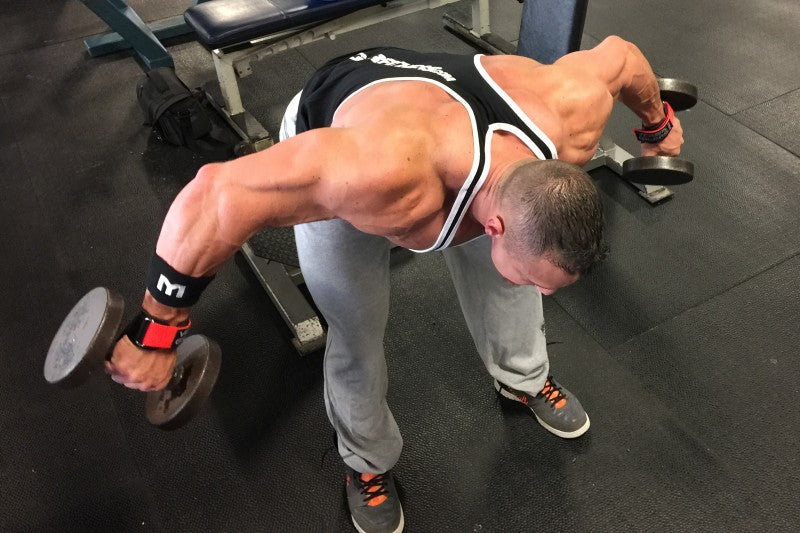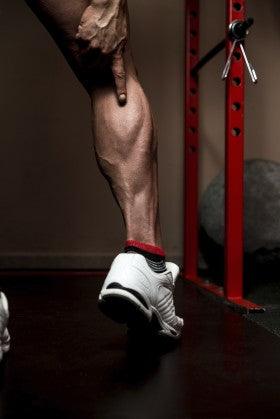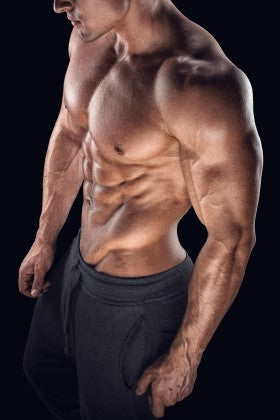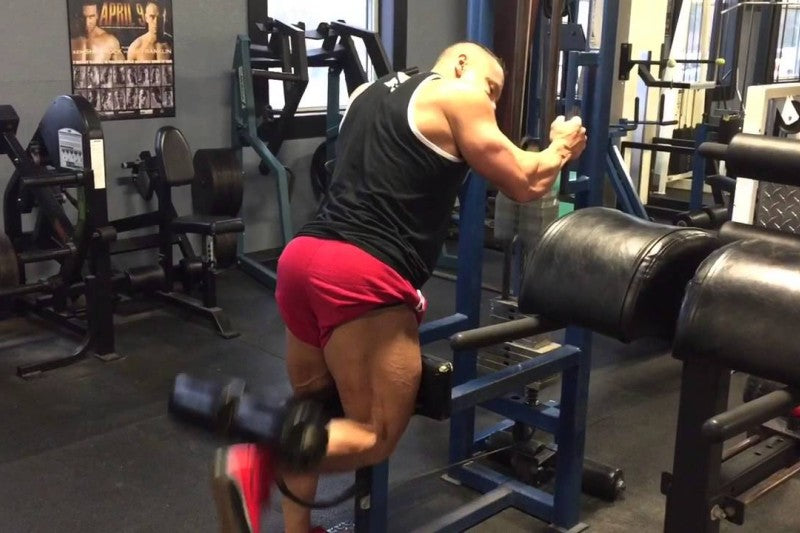German Creatine
100% Pure German Creatine

Whether it be genetics or simply lack of training techniques, there are certain muscle groups which are more difficult to target and grow for the vast majority of people. These muscle groups and areas require both greater volume and select exercises in order to see improved results.
For each of these muscles, I have included two exercises that will promote growth.
The upper chest is quite often one of the most difficult muscle groups to target. This is due to either poor genetics or because of the way your arms are structurally connected to your body. Individuals with long arms, in particular, struggle with reaching the full contraction of the pectoral muscle.
In addition to the common remedies for poor upper chest development such as incline chest press and incline dumbbell press (which you should still perform in addition to the following), these exercises will help you develop that full, complete chest look.
In order to perform this exercise, begin by setting up a barbell with a moderate-sized weight plate such as a standard 45 pound plate on one side of the barbell. Next, place the other end of the barbell against a wall, preferably in a corner (note: this setup is essentially the same as setting up for a T-bar row).
Now stand on your knees and pick up the weighted side of the barbell. Begin performing an upward pressing motion focusing on the contraction of the upper area of the chest. If this weight becomes easier feel free to add additional weight.
Don't go too heavy, focus on the contraction of the muscle. Perform 3-4 sets of this exercise using 10 reps.

Instead of using a rope attachment try performing face pulls with a lat pull down bar. You may find that it targets the muscle to a greater degree.
The rear deltoids are often the most neglected muscle on shoulder day. Often times individuals will perform several shoulder presses and side laterals raises while forgetting there is a third shoulder muscle. Rear delts are of vast importance when trying to create a fully developed, three-dimensional shoulder appearance (dem half-natty delts, if you will).
However, there are several methods which may be implemented to grow your rear delts. In addition to the commonly used rear delt dumbbell flys, add the following to your shoulder day routine to create those boulder shoulders.
Cable movements can be a great way to target smaller muscle groups. This is due to the fact that they provide a constant tension on the muscle throughout the entire repetition. Dumbbells, on the other hand, may vary in tension depending on whether you are in the concentric or eccentric portion of the movement.
In order to perform this exercise, go to a cable station and move the cable attachments on each side to approximately just above shoulder level. Next, take off any accessory attachments that are currently on the machine. Grab each side by the ball bearing-looking piece with opposite arms and simply pull outwards, crossing the cables. Focus on the contraction and fully squeezing the rear delt muscle.
For this exercise do 3-4 sets of 12-15 reps.
Face pulls are a great exercise, not only for developing the rear delt muscle but also for promoting shoulder health and preventing rotator cuff injuries.
Instead of using a rope attachment try performing this exercise with a lat pulldown bar for variety. You may find that it targets the muscle to a greater degree.
This exercise should be performed for 3-4 sets using approximately 12 repetitions.

As Millhouse from the Simpsons once said, "Calves are the most difficult area to add mass," and he wasn't exaggerating!
Often calf muscles become the unicorn muscle that bodybuilders seek to grow in order to promote the fully aesthetic physique we all so long for. However, calves tend to be one of the most lacking muscle groups due to the fact that:
a) People are on their feet all day walking around which hurts calf growth.
b) The vast majority of people train calves once per week for a total of 3 effectively resulting in a 2 minute per week calf training routine.
Calves, in fact, are like baby cows. They need discipline, constant attention, and repetition to grow. Instead of just performing the standard seated calf raises, add the following to your calf routine 2-3 times per week and watch the results happen.
In order to perform this exercise, place a block of some sort on the ground or a 45 pound plate inside of a power rack/squat rack. Next, while in the squat rack place a light to moderate amount of weight on a barbell in the same manner as if you were to perform a back squat.
Now, with the weight on your back, step onto the plate. Place the front half of each foot on the plate and the back half hanging off.
Now simply perform 5 high repetition sets of 15-20 reps until you feel the burn.

Russian twists are a great ab routine finishing movement that really focus on the obliques.
Not only do you have to be extremely lean to see your oblique muscles, but you also have to spend time developing them as well.
The obliques require a mind-muscle connection and special attention to reach their full development. Use extra concentration while performing oblique exercises to fully engage the muscle.
Stand in front of a cable machine and grab the cable attachment with one of your hands. Add a light amount of weight and place your feet at an angle, slightly turned away in the opposite direction of the arm grabbing the machine.
Now bend your knees slightly and pull the weight downwards to your side focusing on the squeeze at the bottom of the movement. You should really feel the oblique contracting at the bottom of the movement in this exercise.
Perform higher rep sets of 20 on each side for 4 sets.

MTS Nutrition CEO Marc Lobliner is shown here pummeling his hamstrings into excessive amounts of growth.
When analyzing the physiques of many amateur and pro bodybuilders alike, the clear consensus is that hamstrings tend to be one of the most severely lacking muscle groups. Many commonly performed leg exercises such as squats, leg press, and lunges tend to be quad dominant movements. However, a fully developed physique cannot be considered complete without strong hamstrings.
In order to help you target the commonly neglected half of your upper leg I recommend the following movements.
Marc Lobliner, Tigerfitness CMO, highlighted this exercise in one of his more recent leg training videos. This exercise places less strain on the lower back, and since it is a unilateral movement it helps prevent muscle imbalances.
Grab an appropriate kettlebell weight (note: dumbbells may be substituted if kettebells are not available). Lower the kettlebell with one arm towards the floor while simultaneously raising the leg opposite of that arm backward keeping that leg straight. Focus on contracting the hamstring in the opposing leg, squeezing it at the bottom, and then slowly raising back up to the starting position.
Perform 4-5 sets of this exercise on each leg while staying in the 10-15 rep range.
Sumo deadlifts have become increasingly popular in recent years and for good reason. Although considered controversial by some, the sumo deadlift allows you to focus on contracting the hamstring while placing less load on the lower back. This provides more hamstring activation compared to the standard conventional deadlift which works various back muscles greatly as well.
In order to perform this exercise, place a barbell with an appropriate amount of weight on the ground. Next, set your shins close to the bar, approximately one inch away, while turning your feet outwards at a 45 degree angle. Keep your feet slightly wider than shoulder width.
Then, place your hands on the bar. They should be slightly inside shoulder. Lastly, pull upwards while keeping the lower back straight and fully engaging the hamstrings, locking out at the top of the movement before repeating.
A good way to perform this exercise is using a 5 x 5 at approximately 80% of your 1 rep max. Perform higher rep sets of 6-10 to really aide in hypertrophy if you so dare.